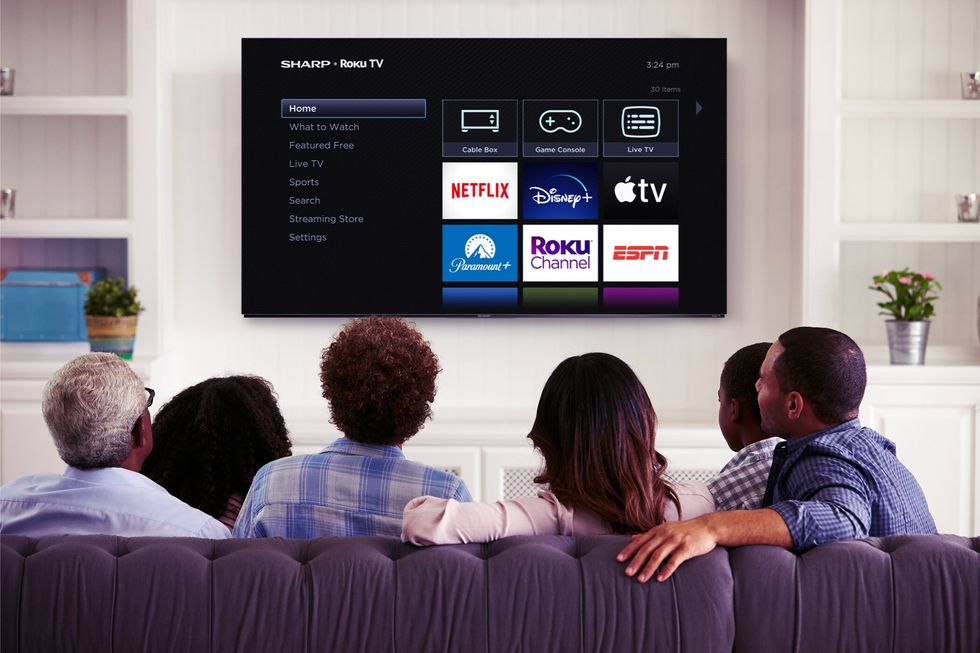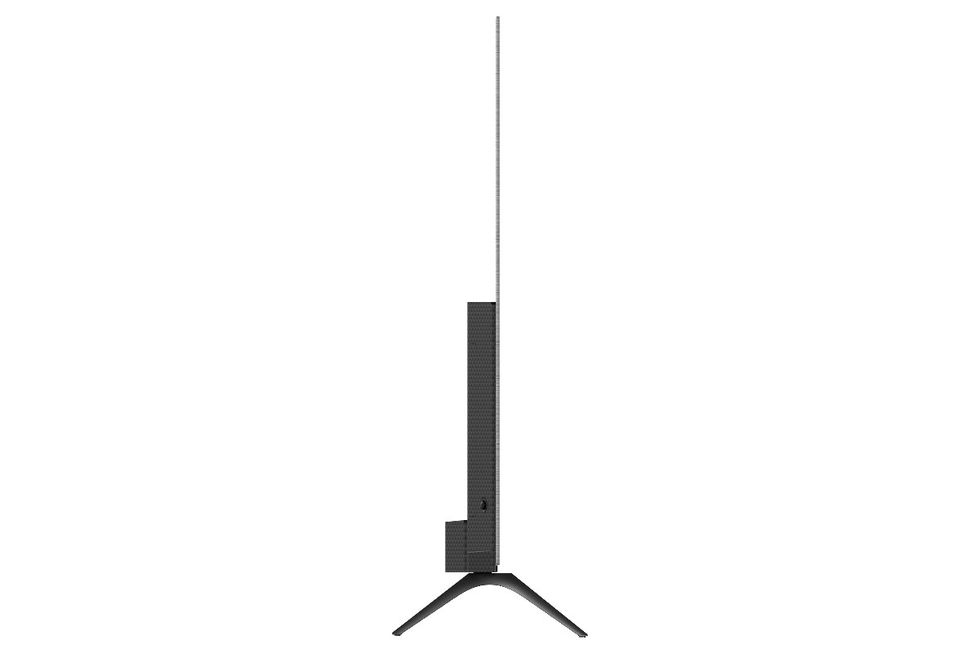A two-part announcement from Roku will boost picture quality for streamers who want to use the popular software to find their next boxset binge-watch of movie marathon
ROKU PRESS OFFICE
A pair of announcements from the biggest streaming platform in the US promise improved viewing quality
- Roku is slowly rolling out a software update with new expert picture settings
- The change in Roku OS 12.5 will only impact those with 4K-compatible devices
- Sharp becomes the first manufacturer to launch a Roku-powered OLED TV
- OLED offers richer colours and inky blacks — the most premium TV technology
Don't Miss
Most Read
Trending on GB News
Roku viewers have received a huge upgrade to picture quality, thanks to a pair of announcements from the streaming brand. First up, Roku has rolled-out expert settings to its suite of 4K devices which unlocks more ways to customise picture settings.
For the first time, Roku viewers will be able to make minute adjusts to colour temperature, colour space, gamma correction, and noise reduction on your TV.
Expert picture settings were already available via the Roku Mobile app, but this software update marks the first time Roku viewers can make the necessary tweaks on-screen using the Roku Express 4K, Roku Streaming Stick 4K, and Roku Streambar.
Roku is comfortably the most popular streaming platform in the United States – beating competition from the likes of Amazon, Apple, and Google in hours watched.

Sharp has released a promotional image of its first-ever OLED TV powered by Roku OS (above)
SHARP PRESS OFFICE
It staggers the roll-out of its software updates, so it might take a few weeks before you’ll find the new expert picture settings, which are a core part of Roku OS 12.5, on your telly.
The new settings aren’t the only announcement from Roku set to improve picture quality for viewers. For the first time, Roku software will be baked into an OLED TV, thanks to Sharp.
Roku has partnered with a variety of manufacturers to offer its popular software as the default operating system built into TVs. The scheme was kickstarted back in 2014, but in all of that time, we’ve never seen an OLED TV. That all changed this week with Sharp’s new Aquos OLEDs, which are available in 55- and 65-inch screen sizes.
These top-tier TVs support 4K Ultra HD resolution, Dolby Vision IQ, HDR10, and four HDMI ports with capabilities for 4K 120Hz gameplay. To take advantage of that high refresh rate, you’ll need a PlayStation 5 or Xbox Series X plugged into one of these ports.
Sharp’s Aquos OLED sets also boast a 30-watt speaker system built into the flatscreen design with full Dolby Atmos compatibility.
Since Aquos OLED TVs will be powered by Roku software, you can expect a steady stream of software updates and new streaming apps and games launching on the platform.
Sharp bundles a remote control with voice search functionality, so you can take advantage of Roku’s trademark Universal Search feature to check the catalogues of all streaming services at once.
That should stop you from accidentally renting a film included as part of your monthly subscription with Disney+, Netflix, Prime Video, Apple TV+, Peacock, or any other streaming services.

As you'd expect from an OLED TV, the Roku-powered Sharp TV is extremely thin. The manufacturer has housed a 30-watt speaker at the back of the panel to bring Dolby Atmos-certified sound
SHARP PRESS OFFICE
Sharp’s new OLED TVs also support Apple AirPlay, HomeKit, Amazon Alexa, and Google Home for some clever smart home integration. The 55-inch Aquos OLED costs $1,499.99 (£1,180 converted), while the larger 65-inch model costs $1,999.99 (£1,574 converted).
The Aquos OLED TVs are available to order in the United States now, but there’s no word on a UK release date for these latest Roku-powered Smart TVs.
Amazon has custom-designed several Smart TVs to showcase its Fire TV software. The flagship model, known as Fire TV Omni-series, relies on a 4K QLED panel, which doesn’t offer quite the same picture quality found with OLED. However, thanks to a similar partnership scheme to that offered by Roku, German tellymanufacturer Grundig released an OLED TV powered by Fire TV back in 2019.
Unfortunately, this model – which cost €1,299.99 (£1,119 converted) for a 55-inch panel at launch – is no longer widely available. This gives Roku an edge when it comes to picture quality for now.
For those who don’t know, OLED panels offer some of the richest visuals available. That's because OLED – or Organic Light-Emitting Diode – displays don’t rely on a uniform backlight. Instead, each pixel is an individual LED that can be switched on and off.
When on, the LED will illuminate asingle-pixel colour to create an image on-screen. When switched off, it leaves that single pixel in total darkness.It’s the latter that allows the cavernous blacks and razor-sharp contrast that OLED panels are known for.
Being able to control LEDs on a per-pixel level, OLED avoids the light pollution from the backlight that makes smaller areas of black look a little grey on LED TVs.
LATEST DEVELOPMENTS
It's also the reason smartphones and tablets with OLED panels can save battery by using apps with primarily black user interfaces since there’s no light used to create that colour. Clearly, battery life isn’t an issue with a flatscreen TV ...but it will increase efficiency.
QLED, the panel technology used by Amazon for its flagship Fire TV, is a halfway house between LED and OLED. Essentially, thesepanels work the same way as standard LED TVs – there is a backlight made up of hundreds or thousands of LEDs to light portions of the individual pixels on-screen.
To improve brightness and vibrancy, QLED employs nanoparticles – known as quantum dots, hence the Q in the name – to supercharge individual pixels.







